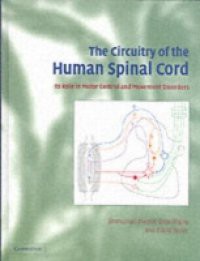Studies of human movement have proliferated in recent years, and there have been many studies of spinal pathways in humans, their role in movement, and their dysfunction in neurological disorders. This comprehensive reference surveys the literature related to the control of spinal cord circuits in human subjects, showing how they can be studied, their role in normal movement, and how they malfunction in disease states. Chapters are highly illustrated and consistently organised, reviewing, for each pathway, the experimental background, methodology, organisation and control, role during motor tasks, and changes in patients with CNS lesions. Each chapter concludes with a helpful resume that can be used independently of the main text to provide practical guidance for clinical studies. This will be essential reading for research workers and clinicians involved in the study, treatment and rehabilitation of movement disorders.

